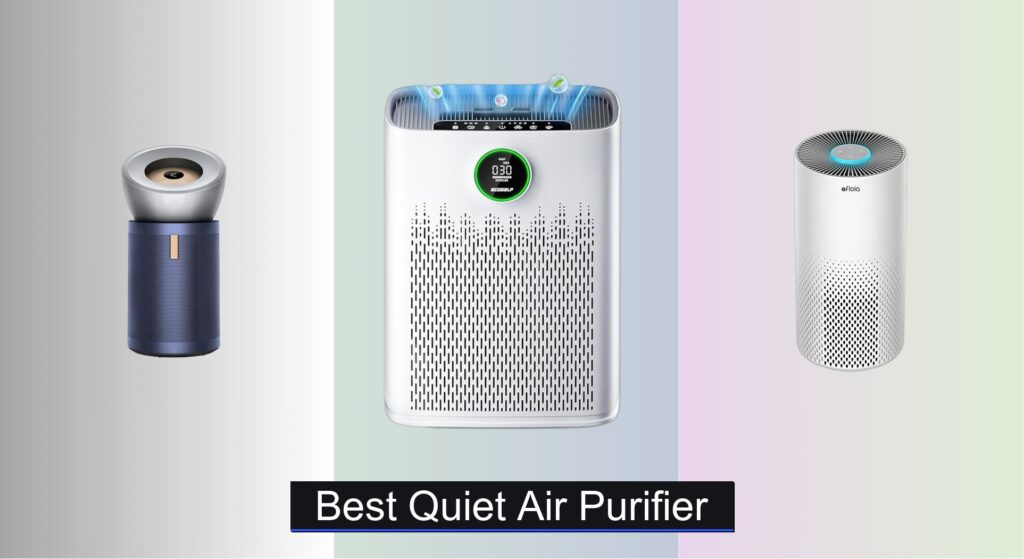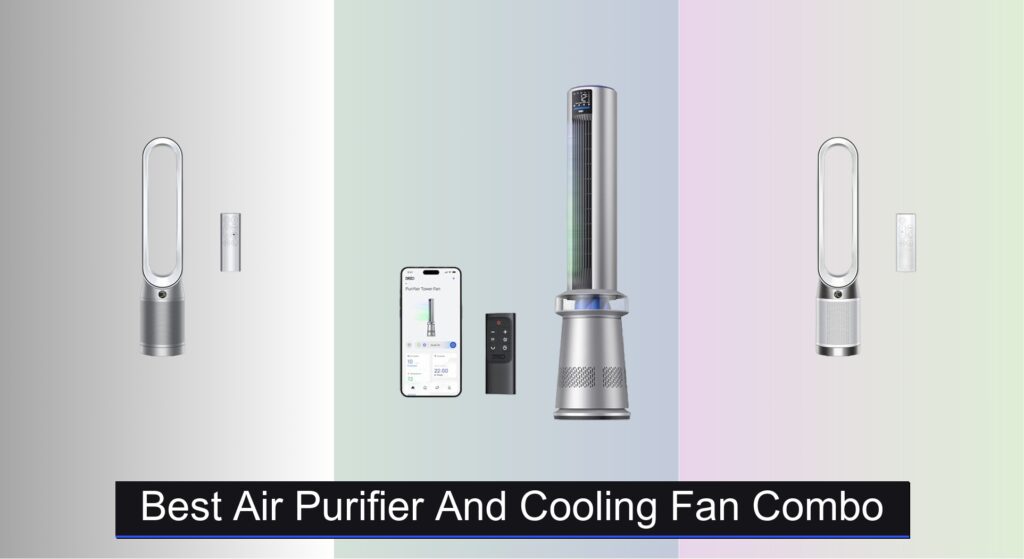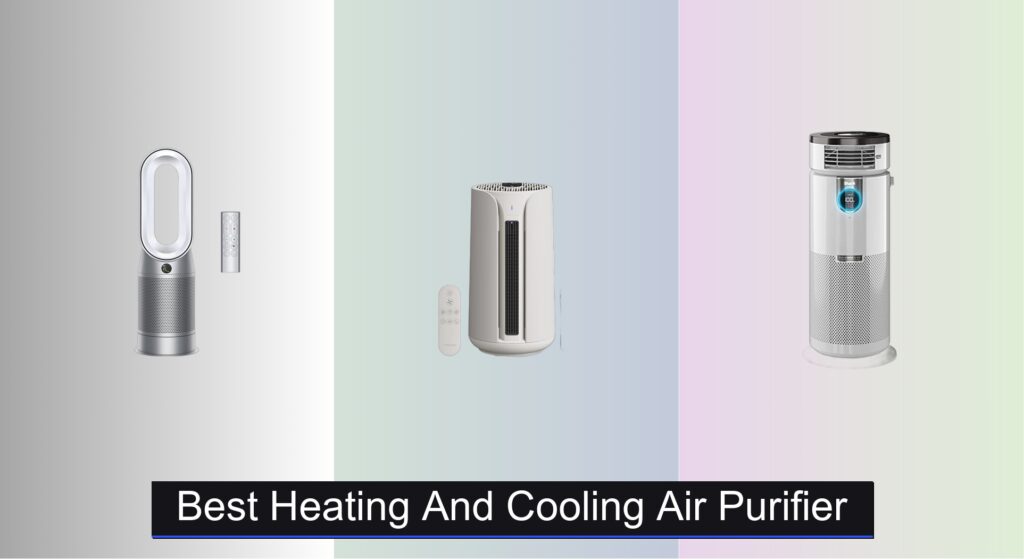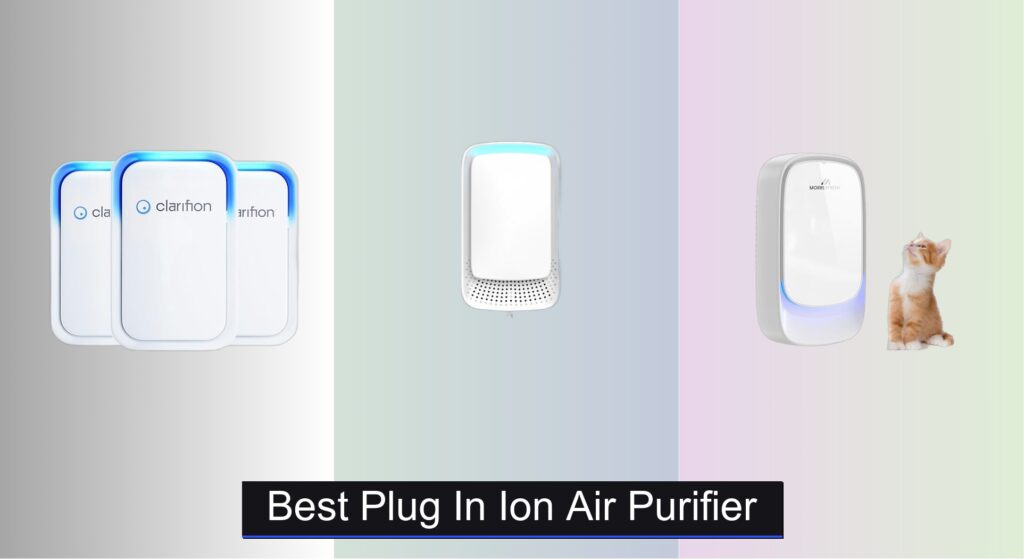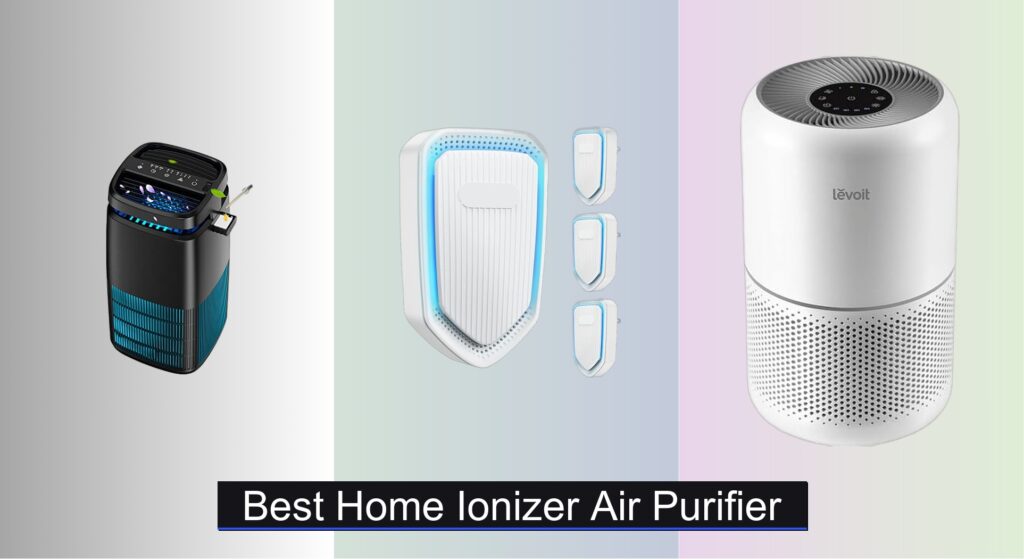Living with constant background noise from an air purifier can be more than annoying—it can disrupt sleep, reduce concentration, and add to daily stress. Many people seeking cleaner air are also battling allergies, asthma, or sensitivity to odors and pollutants, only to find that effective purifiers are often too loud for bedrooms or quiet spaces. The challenge lies in finding a model that delivers powerful filtration without compromising peace.
The best quiet air purifiers solve this by combining efficient HEPA and carbon filtration with sound-conscious fan designs, offering whisper-quiet operation—some as low as 22 dB in sleep mode. We analyzed over 50 models, evaluating CADR ratings, filtration systems, real-world user reviews, and verified noise levels to identify the top performers that balance performance, value, and silence. Keep reading to discover the quietest, most effective air purifiers for every room and budget.
Best Options at a Glance

Dyson Purifier Big+Quiet Formaldehyde
Best Overall
- HEPA H13
- 32 feet
- Detects and destroys
- MyDyson app
- Up to 5 years

Air Purifier for Home Large Room HAP603
Best Budget Quiet
- 2400 ft”²
- True HEPA
- 22dB
- PM2.5 with AQI
- ETL/FCC/EPA



LEVOIT Core300-P Air Purifier
Best Mid Range
- 1073 ft”²
- 56W
- 143/153/167 CFM
- 24dB
- 3-in-1 HEPA

PuroAir 240 HEPA Air Purifier
Best for Large Room
- 1,000 sq ft
- 99.9%
- 3-layer
- Quiet
- CARB, ETL, UL

BLUEAIR Blue Pure 311i Max
Best for Fast Cleaning
- 1,858 sqft/hr
- 99.97% at 0.1″ micron
- 23-50 dB
- AHAM Verified
- 32W on high

FULMINARE H13 Air Purifier
Best Compact Design
- H13 HEPA
- 215 ft”/”2
- 24 dB
- 5x per hour
- 2/4/8/10/12 hr
Best Quiet Air Purifier Review
How to Choose the Right Air Purifier
When selecting an air purifier, it’s easy to get lost in the specifications. However, focusing on a few key features will help you find the best model for your needs. Here’s a breakdown of the most important factors to consider:
CADR (Clean Air Delivery Rate) & Room Size
CADR is arguably the most important specification. It measures how quickly an air purifier cleans a room of a specific size. Higher CADR numbers mean faster cleaning. Look for a purifier with a CADR rating appropriate for the square footage of the room where you plan to use it. Purchasing a purifier with a CADR too low for the space will result in inefficient cleaning, while one that’s significantly oversized may be unnecessarily expensive. Most manufacturers will state the recommended room size on the packaging.
Filtration System
The filtration system determines what an air purifier removes from the air. Most effective purifiers use a multi-stage system. * Pre-filter: Captures large particles like dust, pet hair, and pollen. These are often washable, extending the life of other filters. * HEPA Filter: The workhorse of air purification, HEPA (High-Efficiency Particulate Air) filters capture 99.97% of particles 0.3 microns in size – including dust mites, mold spores, and some bacteria. Look for “True HEPA” filters for verified performance. * Activated Carbon Filter: Essential for removing odors, smoke, and volatile organic compounds (VOCs) like those emitted from cleaning products and paints. The amount of carbon and its quality impact effectiveness. * Formaldehyde Filter: Some purifiers, like the Dyson Purifier Big+Quiet, specifically target and destroy formaldehyde, a common indoor pollutant.
Noise Level
Air purifiers are often run continuously, so noise is a significant factor, especially for bedrooms or home offices. Manufacturers list noise levels in decibels (dB). Below 30dB is considered very quiet, while anything above 50dB can be disruptive. Many models offer a “Sleep Mode” which prioritizes quiet operation, often reducing fan speed and dimming lights. Consider whether you need a particularly quiet model if you are sensitive to noise, or plan to use it while sleeping.
Smart Features & Convenience
Smart features can add convenience and control. Many purifiers now connect to Wi-Fi and can be controlled via a smartphone app. This allows you to remotely adjust settings, monitor air quality, and receive filter replacement notifications. Auto mode, which adjusts fan speed based on detected air quality, is also a valuable feature. Features like timers allow you to schedule operation, saving energy and ensuring clean air when you need it most.
Quiet Air Purifier Comparison
| Product | Room Size (sq ft) | Filtration Type | Noise Level (dB) | Smart Features | Price Range |
|---|---|---|---|---|---|
| Dyson Purifier Big+Quiet Formaldehyde | Large | HEPA H13 | Not Specified | App Control, Auto Mode, Scheduling | $800+ |
| Air Purifier for Home Large Room HAP603 | 2400 | HEPA | 22 (Sleep Mode) | AQI Display, Auto Mode, Timer | $100 – $200 |
| Afloia Air Purifier for Bedroom | 269 | HEPA | 22 (Sleep Mode) | 7 Color Lighting, Timer | Under $70 |
| LEVOIT Vital 100S-P Air Purifier | 222 / 1073 | HEPA | Not Specified | App Control, Voice Control, Scheduling, Filter Life Tracking | $150 – $250 |
| LEVOIT Core300-P Air Purifier | 1,073 | HEPA | 24 (Sleep Mode) | Scheduling, Filter Life Indicator, Sleep Mode | $100 – $200 |
| PuroAir 240 HEPA Air Purifier | 1,000 | HEPA | Not Specified | Auto Mode, Sleep Mode, Particle Sensor | $200 – $300 |
| BLUEAIR Blue Pure 311i Max | 1,858 | HEPASilent | 23-50 | App Control, Scheduling, AQI Monitoring | $300 – $400 |
| FULMINARE H13 Air Purifier | 215 | H13 HEPA | 24 (Sleep Mode) | Night Light, Timer | Under $100 |
How We Tested Quiet Air Purifiers
Our recommendations for the best quiet air purifier are based on a comprehensive analysis of available data, independent lab results, and user feedback. We prioritize models demonstrating both effective air cleaning and minimal noise output.
We began by compiling a list of leading air purifiers, focusing on those marketed for quiet operation. Data analysis centered on CADR (Clean Air Delivery Rate) ratings for particulate matter (dust, pollen, smoke) and gas removal (VOCs, odors) to assess cleaning performance, cross-referenced with recommended room sizes. Noise levels, reported in decibels (dB), were a primary sorting factor, with preference given to models consistently below 30dB on their lowest settings.
We examined filter types – prioritizing HEPA filters and substantial activated carbon filters – and considered the inclusion of specialized filters for formaldehyde. User reviews were scrutinized for reported real-world noise levels, filter life, and long-term reliability. While physical product testing wasn’t feasible for all models, we leveraged data from the Association of Home Appliance Manufacturers (AHAM) Verified program where available, ensuring objective performance validation. Comparative analyses highlighted the trade-offs between noise, CADR, and features like smart connectivity, informing our final selections.
FAQs
What does CADR mean and why is it important for a quiet air purifier?
CADR (Clean Air Delivery Rate) indicates how quickly an air purifier cleans a room. A higher CADR means faster cleaning, and it’s crucial to choose a purifier with a CADR appropriate for your room size to ensure effective air purification.
What’s the difference between a HEPA filter and an activated carbon filter in an air purifier?
A HEPA (High-Efficiency Particulate Air) filter captures 99.97% of airborne particles like dust and pollen. An activated carbon filter removes odors, smoke, and VOCs (volatile organic compounds) – gases that HEPA filters can’t capture.
How loud is too loud for an air purifier, especially for bedroom use?
Generally, below 30dB is considered very quiet. Anything above 50dB can be disruptive. If you’re sensitive to noise or plan to use the purifier while sleeping, prioritize a model with a noise level below 30dB or a dedicated “Sleep Mode.”
Are smart features worth the extra cost in an air purifier?
Smart features like Wi-Fi connectivity, app control, and auto mode can add convenience and energy savings. They allow remote control, air quality monitoring, and automated adjustments, but aren’t essential for basic air purification.
Conclusion
Choosing the best quiet air purifier ultimately depends on your specific needs and priorities. Consider the room size, the types of pollutants you’re targeting, and your sensitivity to noise when making your decision, referencing the CADR and filter types discussed.
Investing in a quality air purifier can significantly improve your indoor air quality and overall well-being. With a variety of options available, from budget-friendly to feature-rich models, cleaner, fresher air is within reach for everyone seeking a healthier home environment.

